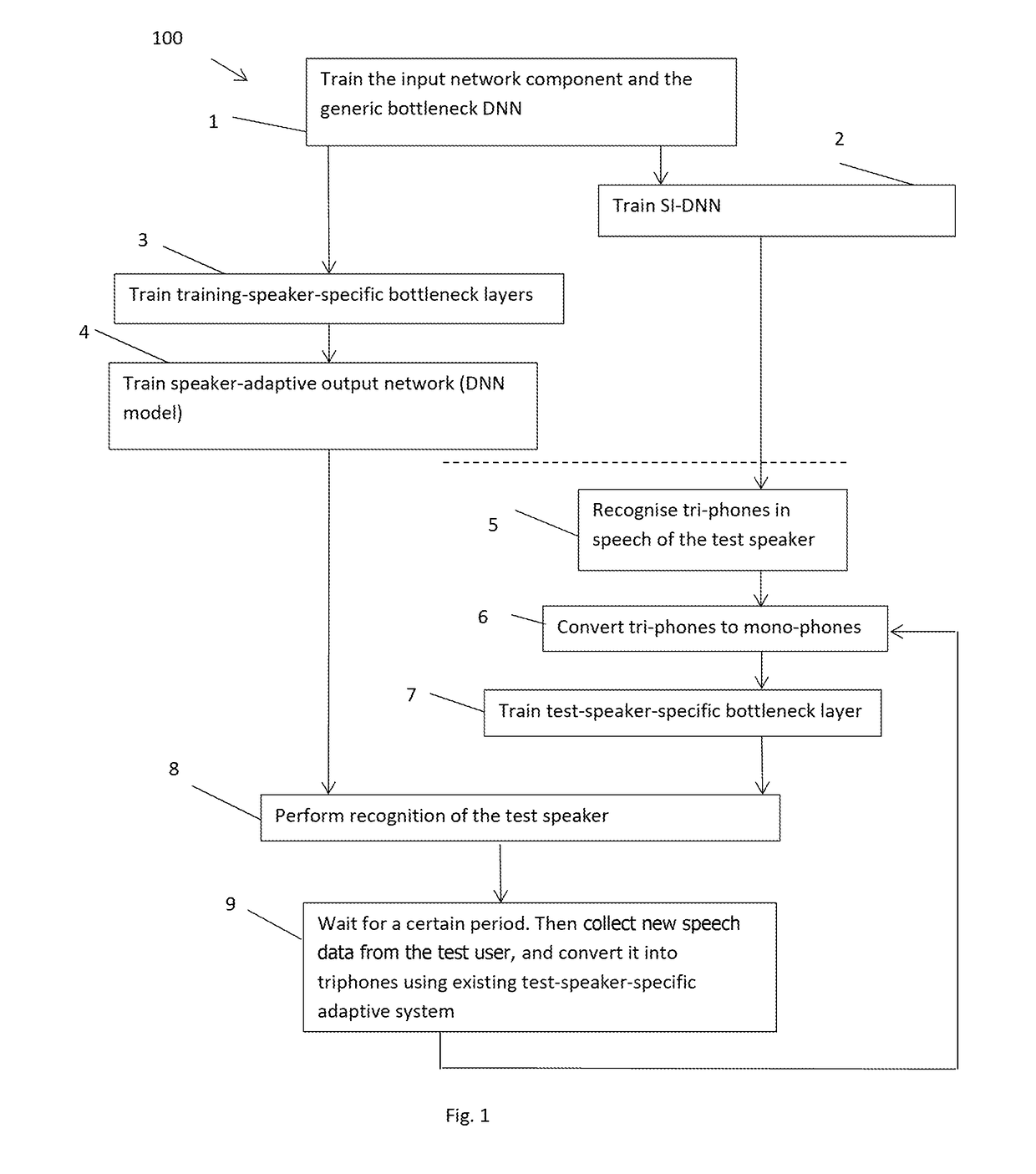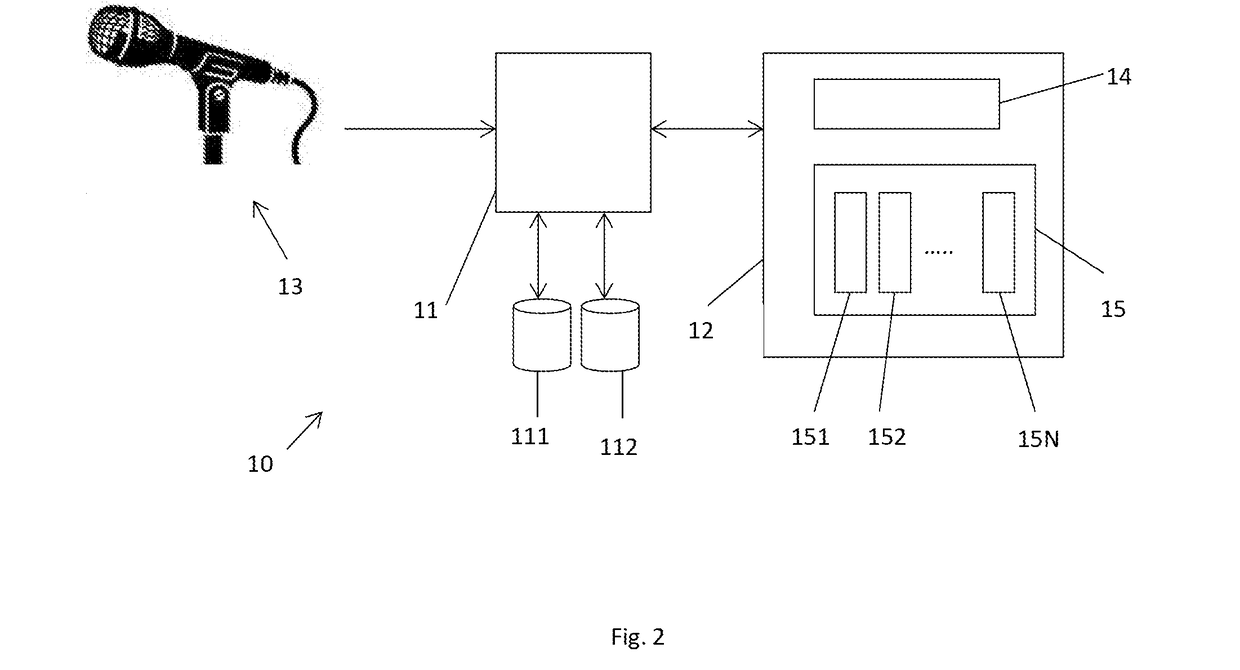Speaker-adaptive speech recognition
a speech recognition and speaker technology, applied in speech analysis, speech recognition, instruments, etc., can solve the problems of having to be re-trained once, and the performance of an unknown test speaker can be very poor
- Summary
- Abstract
- Description
- Claims
- Application Information
AI Technical Summary
Benefits of technology
Problems solved by technology
Method used
Image
Examples
Embodiment Construction
[0021]According to one example, the present disclosure proposes that an adaptive model component is provided for each of a number of training speakers. Each adaptive model component is trained, as part of an adaptive network having an input network component (typically a plurality of layers of neurons) and the adaptive model component, using training data for the corresponding training speaker. Thus, for each of the training speakers, a corresponding training-speaker-specific adaptive model component is formed.
[0022]The input network component may be trained in advance as part of an adaptive model comprising the input network component and an adaptive model component. The input network component and adaptive model component are trained by supervised learning using speech from the training speakers. Furthermore, during this process the adaptive model component is trained to be a generic (that is, speaker-independent) adaptive model component.
[0023]At least part of the input network c...
PUM
 Login to View More
Login to View More Abstract
Description
Claims
Application Information
 Login to View More
Login to View More - R&D
- Intellectual Property
- Life Sciences
- Materials
- Tech Scout
- Unparalleled Data Quality
- Higher Quality Content
- 60% Fewer Hallucinations
Browse by: Latest US Patents, China's latest patents, Technical Efficacy Thesaurus, Application Domain, Technology Topic, Popular Technical Reports.
© 2025 PatSnap. All rights reserved.Legal|Privacy policy|Modern Slavery Act Transparency Statement|Sitemap|About US| Contact US: help@patsnap.com



